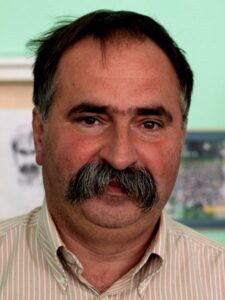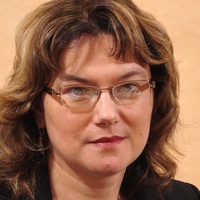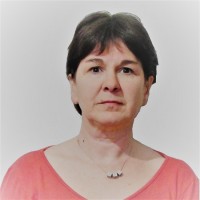MECOM2022


prof. tomasz kapitaniak
TRANSITIONS BETWEEN DIFFERENT RINGING SCHEMES OF THE CHURCH BELL
We present a hybrid model of church bell. The dynamical system of yoke-bell-clapper is nonlinear and discontinuous. We use the Lagrange equations of the second type to derive formulas that describe the system’s motion. The energy between the bell and the clapper is transmitted via impacts, here modeled using a coefficient of energy restitution. The values of the system’s parameters have been determined basing on the measurements of the biggest bell “The Heart of Lodz” in the Cathedral Basilica of St Stanislaus Kostka, Lodz, Poland. Using the same bell we also validate the model by comparing the results of numerical simulations with experimental data. The presented results show that the described model is a reliable predictive tool which can be used both to simulate the behavior of the existing yoke-bell-clapper systems as well as to design the yokes and predict the motion of new bells.

Prof. ekaterina pavlovskaia
modelling of vortex induced vibrations
Vortex-induced vibrations (VIV) need to be accounted for in the design of marine structures such as risers and umbilicals. If a resonance state of the slender structure develops due to its interaction with the surrounding fluid flow, the consequences can be severe resulting in the accelerated fatigue and structural damage. There is a range of VIV models and specific software available in the modern engineering practice. In general, two important aspects need to be balanced in any applied method: accuracy of predicting the development of the resonance state in given conditions, and computational time to get reliable results. The existing software is able to provide either accurate prediction by complex computational fluid dynamics (CFD) estimations of the fluid characteristics around the structure, or a relatively fast result, but with a probability of risk of underestimation. In both cases, when the decision needs to be made about VIV prevention, designers tend to apply high safety factors. That means that there is a limited trust in the existing models, and, hence, there is a room to improve computational approach to VIV problem. Wake oscillator models allow to estimate the fluid force acting on the structure without complex and time consuming CFD analysis of the fluid domain. However, contemporary models contain a number of empirical coefficients which are required to be tuned using experimental data. In this work the fluid–structure interactions are considered by investigating a straight but slender pipe vibrating in a uniform water flow. The pipe is modelled as an Euler–Bernoulli beam with flexural stiffness. The external fluid force applied to the structure is the result of the action of sectional vortex-induced drag and lift forces which are modelled using various nonlinear oscillator equations. The coupled system of nonlinear partial differential equations describing the dynamic behaviour of the system was simplified employing Galerkin–type discretisation to obtain the reduced order model. The resulting ordinary differential equations were solved numerically providing multi-mode approximations of the structure displacement and non-dimensional fluid force coefficients. The wake oscillator model proposed by A. Postnikov et al. (Int. J. of Mech. Sciences, 127:176–190,2017) is modified in the current work to deliver an adequate prediction of the system as variation in the applied damping in fluid equation is considered (V. Kurushina et al., Int. J. of Mech. Sciences,142-143:547–560, 2018; V. Kurushina et al., Int. J. of Eng. Science, 150:103211, 2020). The priority during calibration is given to predicting peak displacements of a structure. The validation is performed using the published data from different experimental set-ups. This work is aimed to be one of the steps on the way to introduce modern, refined wake oscillator models into wide engineering practice.

Prof. Adrian lew
SOME MODELING AND COMPUTATIONAL CHALLENGES IN METAL 3D PRINTING
How to construct and trust a model for Selective Laser Melting (SLM)? SLM is the process of printing a 3D geometry by depositing and selectively melting regions of a layer of a powder bed. In this process, the range of temperatures and strains, the number of potential material deformation mechanisms involved, and the difficulties in experimentally isolating individual physical phenomena, cast a shadow of uncertainty over the use of computational models to inform and enrich the understanding of inelastic processes active during printing.
In this talk I will illustrate the issues we found while doing this for 17-4 PH SS. First, we examine the question of how reliable thermal histories computed from a model that reproduces melt pool traces are. To this end, we perform experiments in which one of two different laser beams moves with constant velocity and power over a substrate of 17-4PH SS or Ti-6Al-4V, with low enough power to avoid generating a keyhole. We find that many different models that reproduce melt pool traces can give rise to different thermal histories. However, thermal histories appear to be reliably computed provided that (a) the power density distribution of the laser beam over the substrate is well characterized, and (b) convective heat transport effects are accounted for.
Second, we examine the question of how to calibrate a phenomenological model for the mechanical response of 17-4 PH SS in SLM: what are the important mechanisms? Which of the mechanisms can we validate with the experiments we propose, and which are those for which we do not have enough information to tell? To this end, we designed deflection experiments of metallic beams monitored by a high-speed camera, which offer the benefit of the substrate’s simple thermal and mechanical history. By reproducing the deflection experiments with a material model that includes both heat conduction and elasto-viscoplasticity, we conclude that the solid-state phase transformation plays an indispensable role in the evolution of residual stresses of 17-4PH SS. We also highlight the necessity of monitoring time evolution instead of the end state when evaluating models for residual stress of alloys with volume change during phase transformation.
Finally, I will illustrate one particularly interesting computational challenge: How do we optimize the path of the heating source, e.g. a laser, to obtain a desired thermal history? This is a complex combinatorial problem. I will show a way in which we reformulated this problem as a Traveling Salesperson Problem (TSP),

Prof. marta rosales
BLOWIN’ IN THE WIND: REVIEW OF FOUR DECADES OF RESEARCH
This talk is intended to review the evolution of my research activities starting from experiments in a wind tunnel to stochastic simulations of wind load on slender structures. Teachers, colleagues and disciples were (and are) essential to achieve the results and deserve to be mentioned first.
Regarding the investigations, many subjects were addressed by the different groups in which I participated, always related with structural problems, within Civil and Mechanical Engineering. The topics ranged from Mechanics of Materials, Mechanics of Solids, Probabilistics, analytical solutions, numerical and computational approaches, experiments, and so on. Statics, stability and dynamics, deterministic and stochastic, linear and no linear, bifurcations, etc. The loop starts with wind and ends with wind… with many structures in the middle.